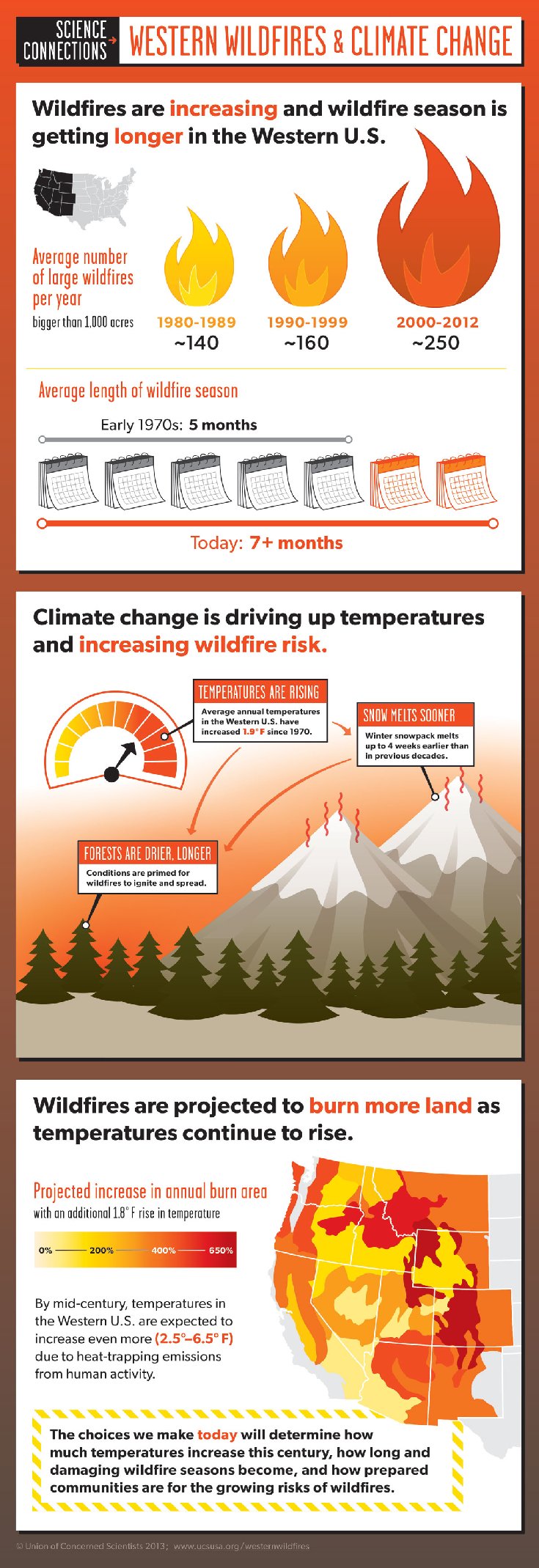As of early August 2013, 36 wildfires were burning in eight western states and Alaska, including six in California and nine new large fires in Arizona, Idaho, Nevada, Oregon and Wyoming, according to the National Interagency Fire Center. Already this year, more than 2.5 million acres have gone up in smoke -- an area bigger than Yellowstone National Park. And that's actually a lot smaller than its been at this point in some recent years (last year, almost twice as many acres had burned by early August).
Spring and summer wildfires have always been a fact of life in the arid West. But with shrinking winter snowpack and warming spring and summer temperatures, the number and frequency of large fires has increased dramatically over the last four decades. In the more than 50 years that the NIFC has kept wildfire records, the three worst seasons have occurred within the last seven years (2006 topped the charts, followed by 2007 and 2012).
Last year, the non-profit group Climate Central analyzed 42 years of U.S. Forest Service records for 11 Western states, and found a direct correlation between heightened fire risk and rising temperatures due to climate change -- a result, in part, of human-induced greenhouse gas emissions.

Based on findings from the National Research Council, the report notes that for every degree Celsius (1.8o F) of temperature increase, the size of area burned in the western U.S. could quadruple. The Intergovernmental Panel on Climate Change, meanwhile, estimates that summer temperature in western North America, could increase between 3.6oF and 9oF by the middle of this century.
The Climate Central report found that, as compared to the average year during the 1970s, the average year from 2002 to 2011 has had:
-
-
- 7 times more fires exceeding 10,000 acres
- Nearly 5 times more fires exceeding 25,000 acres
- Twice as many fires exceeding 1,000 acres -- Now there are an average of roughly 100 fires per year as compared with less than 50 per year during the 1970s. In Arizona and Idaho, this rate has nearly quadrupled.
- Twice as much land area burned by wildfires each year.
- A burn season that begins earlier, ends later, and lasting, on average, two-and-a-half months longer.
-